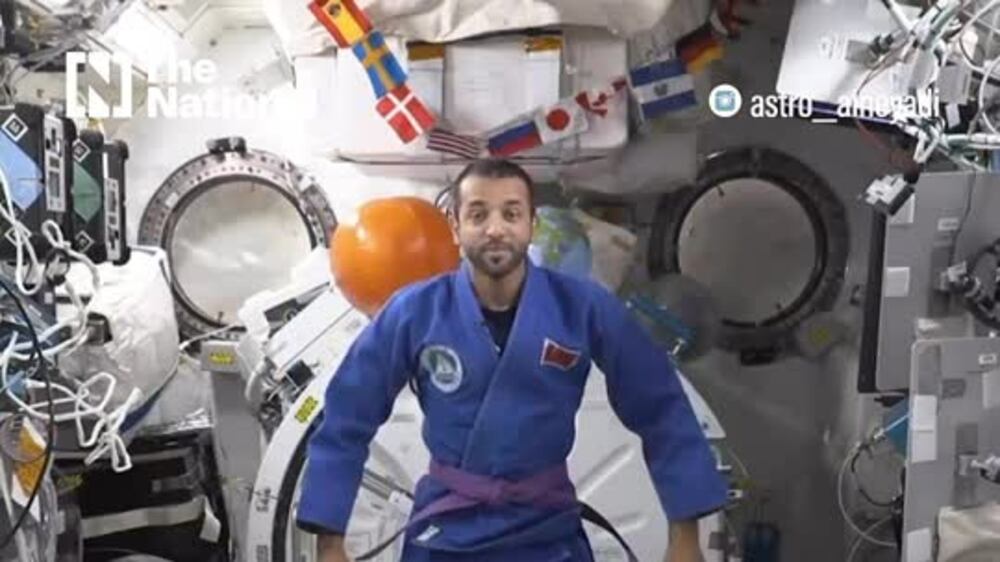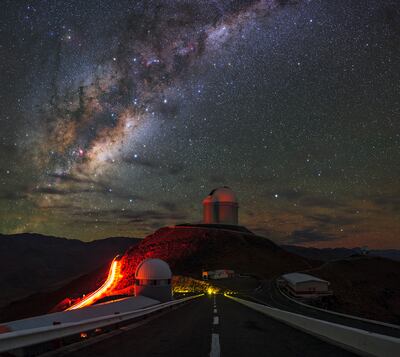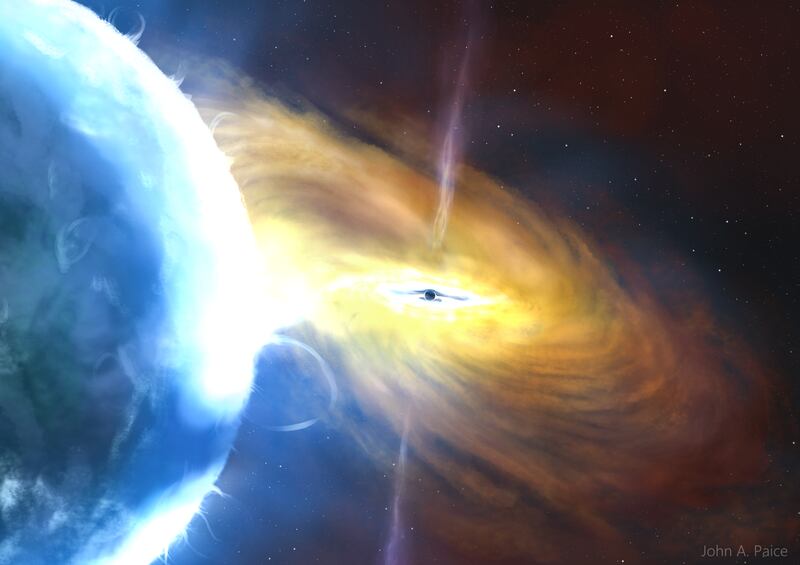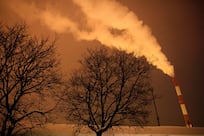A colossal cosmic explosion that took place nearly 8 billion light-years away is the largest ever witnessed, astronomers said on Friday.
Scientists think the blast could have been caused by a cloud of mostly hydrogen gas many times bigger than the sun being sucked into a supermassive black hole.
The gas being swallowed is thought to have sent shock waves through the remaining gas, causing an explosion 10 times brighter than an exploding star, called a supernova.
Although first spotted in 2020 by a facility in California, the scale of the explosion, called AT2021lwx, was previously unknown.
It took place when the universe was about six billion years old.
Scientists from the University of Southampton in the UK used a selection of telescopes run by European nations and Nasa to view and measure the size of the blast.
They concluded it to be the largest on record, having lasted more than three years. Most supernovae are only visibly bright for a few months.
UAE astronaut Sultan Al Neyadi wears jiu-jitsu kimono in space

Their study was published in the Monthly Notices of the Royal Astronomical Society on Friday.
“We came upon this by chance, as it was flagged by our search algorithm when we were searching for a type of supernova,” said research leader Philip Wiseman, research fellow at the University of Southampton.
“Most supernovae and tidal disruption events only last for a couple of months before fading away. For something to be bright for two-plus years was immediately very unusual.”
How was the blast measured?
Measuring the size of an explosion occurring so far away is not as easy as just getting out the ruler.
The team had to analyse the spectrum of light emitted from the blast in great detail to work out distances.
“Once you know the distance to the object and how bright it appears to us, you can calculate the brightness of the object at its source,” said Sebastian Hoenig of the University of Southampton, a co-author of the research.

“Once we’d performed those calculations, we realised this is extremely bright,”
There is so much more to be measured about the blast, including temperature,
Emerging technology may also help the team to test their theory on the causes behind AT2021lwx.
“With new facilities, like the Vera Rubin Observatory’s Legacy Survey of Space and Time, coming online in the next few years, we are hoping to discover more events like this and learn more about them, said Dr Wiseman.
“It could be that these events, although extremely rare, are so energetic that they are key processes to how the centres of galaxies change over time.”






